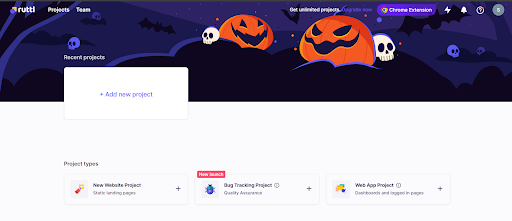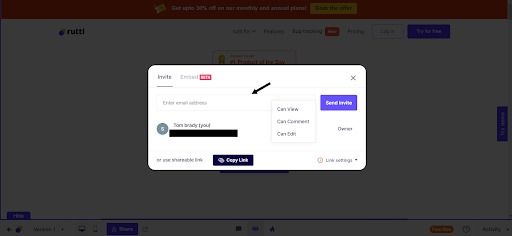As the project owner, it's your responsibility to ensure that your vision for the website is realized by the graphic design team you're working with. After all, it's your website, and you should be happy with how it looks.
However, you may run into situations where the first draft differs from what you had in mind, and some things need to be changed. In these cases, it's important to be clear with your feedback so that the designers can make the changes you want to see.
Effective feedback can help improve the final product and ensure that it meets the needs of its intended audience.
So, how do you ensure that you're providing feedback to your graphic designer in the right way?
Let's find out.
What exactly is design feedback?
Design feedback is when someone gives you their thoughts and opinions on your design. This can be anything from how they think the overall design looks to specific elements like colors or fonts.
The key to effective design feedback is to focus on the specific aspects of the design that could be improved and to offer suggestions for how to make those improvements. This can help ensure that the final design is more effective and meets the needs of its intended audience.
Why is good feedback important?
Good feedback is essential because it helps improve the final web design and ensure that it meets the needs of its intended audience. Good feedback is specific, actionable, and focused on the aspects of the design that can be improved. It also takes into account the overall goals and objectives of the project.
On the other hand, bad feedback is vague, unhelpful, and often not actionable. It can lead to delays and confusion, as designers may need help to address the feedback or may even have to redo work that has already been completed. This can be frustrating and time-consuming and ultimately result in a final design that needs to be revised.
Good feedback is crucial for ensuring the following:
- The design process is efficient and effective;
- Designers understand what works and what doesn't;
- Designers get the information they need to make informed decisions and improve their work.
Collecting good feedback is an integral part of any design project and can ultimately lead to a better final product.
Tips to give great design feedback
1. Destructive or unsupportive feedback
Sometimes, graphic designers are required to interpret complex and ambiguous directions from their managers. Your feedback can be positive or negative, but it should not be destructive.
Destructive design feedback is any feedback that is negative, unhelpful, or outright hostile. It can be difficult to deal with, but it's important to remember that constructive feedback is always more valuable in the long run.
Destructive or unsupportive feedback can lead to resentment and stress for both parties.
It's easy to give feedback that isn't helpful. Here are some examples:
- "I don't like it." This is not constructive feedback because it doesn't say why you don't like it or what you do like.
- "Change everything!" This is not constructive feedback because there's no context for what should be changed and why.
- "It's not what I expected." This is not constructive feedback because you haven't told them what they did wrong or how they can fix it in the future.
How can you make this design feedback better?
Design can be a sensitive subject, and designers often take criticism personally. When giving feedback, try to be constructive and supportive. Remember that the goal is to help improve the design, not to tear it down.
You should avoid making personal attacks or judgments, and instead focus on the design itself.
Try using "I" statements to express your perspective and experiences when providing feedback.
For example, instead of saying, "This design is terrible," try saying, "I think this design could be improved by focusing on X, Y, and Z."
This will help the designer understand where you're coming from and make your feedback feel more personal and sincere.
2. Ill-timed or late feedback
One of the biggest problems with design feedback is that it is often given too late in the process. By the time the feedback is given, the designer has already put a lot of work into the design and may be reluctant to make changes. This can lead to a lot of back-and-forth between the designer and the client and ultimately delay the project.
Additionally, in some cases, there are no set stages for design feedback, so it can be hard to know when and how to give the feedback. This can often lead to design feedback being either too late or too early, which can be frustrating for both the designer and the client.
How can you make this design feedback better?
The feedback should be timely so the designer can easily incorporate changes before the deadline without any haste.
The earlier you provide feedback, the more time the designer will have to incorporate it into their work. Timely feedback helps avoid delays and ensures the design process stays on track.
Additionally, try to be consistent in your feedback. If you provide feedback at one stage of the design process, provide follow-up feedback at subsequent stages. This will help the designer understand how their work is progressing and ensure they are moving in the right direction.
3. Not using a design feedback tool
Suppose you are not using a design feedback tool when giving feedback to a graphic designer. In that case, it can make it difficult for the designer to understand and incorporate the feedback effectively.
Without a tool to organize and track feedback, the designer may receive conflicting or vague feedback, which can be frustrating and confusing. Additionally, without a record of previous feedback and responses, it can be difficult for the designer to see how their work has progressed and improved over time.
How can you make this design feedback better?
One way to help ensure that your feedback is helpful, actionable and trackable is to use a design feedback tool.
There are a number of different design feedback tools available, but they all essentially serve the same purpose: to help you give better feedback.
There are several ways that a feedback tool can help you give design feedback properly:
- It provides a central place to collect and organize feedback: With a design feedback tool, you can easily collect and organize feedback from multiple people in one place, which can help you keep track of different suggestions and ideas.
- It allows you to leave comments and suggestions directly on the design: Most design feedback tools allow you to leave comments and suggestions directly on the design itself, which can help the designer understand exactly what you are thinking.
- It provides a record of previous feedback and responses: With a design feedback tool, you can see previous feedback and responses, which can help you track the progress of the design and ensure that previous suggestions are being addressed.
Overall, a design feedback tool can help you give design feedback in a clear, organized, and actionable way, which can improve the design process and result in better designs.
4. Authoritative behavior
Managers often authoritatively give feedback and make decisions for the designers rather than working with them to find a solution. This can make the designer feel disempowered and unable to contribute their ideas and creativity to the project.
When managers give overly prescriptive feedback or try to control the creative process, it can stifle innovation and creativity. It can also lead to a lack of ownership and buy-in from the designer, which can affect the quality of the final design.
How can you make this design feedback better?
While it's important to provide suggestions and ideas for how the design can be improved, it's ultimately the designer's responsibility to make the final decisions about the design.
Instead of making decisions for the designer, try to offer suggestions and let them make the final decisions. This will allow them to exercise their creativity and ownership over the design, and it will help to foster a more collaborative and positive working relationship.
By working together, managers and designers can find a solution that meets the client's needs while allowing the designer to be creative and innovative.
5. Undescriptive feedback
The worst kind of feedback is undescriptive feedback. It's vague, non-specific, and doesn't tell you anything about what you need to do differently or better next time.
For example, if a designer shows you a design and you say, "I don't like it," without explaining why the designer will have no idea what to change or improve. This can be frustrating for the designer and make it difficult for them to incorporate your feedback effectively.
How can you make this design feedback better?
It would help if you were clear and concise when giving feedback to graphic designers. Take the time to explain why you dislike something, or it isn't working for you.
For example, explain why it doesn't work for the project or what colors you would prefer if you don't like the color scheme. If you think a particular element is too busy or cluttered, explain why that is and how simplifying it would improve the design.
The more specific and descriptive you can be, your feedback will be more helpful. Remember, the goal is to help the designer create the best possible design, so take the time to give feedback that will be truly useful.
Issues with current methods of design feedback collection
Traditional methods for collecting design feedback typically involve using static documents and presentations, such as screenshots, PowerPoint slides, and email threads, to share the design with stakeholders.
Here are the issues with traditional methods used in collecting design feedback:
- Screenshots and documents are static and do not provide an interactive platform for discussion and decision-making. This makes it difficult for designers and stakeholders to collaborate and discuss feedback in real time.
- Email threads can quickly become cluttered and disorganized. They do not provide an interactive platform for sharing and discussing feedback. They don't allow easy feedback and progress tracking, hindering effective communication and collaboration between designers and stakeholders.
- Presentations are typically one-way communication, with the presenter presenting the design to the audience. This does not allow for interactive discussion and collaboration, making it difficult to incorporate feedback and make decisions. Also, presentations take up a lot of time, which could be better, especially when working with multiple stakeholders.
These methods can be cumbersome and slow, hindering effective communication and collaboration between designers and stakeholders.
Share better feedback on designs with ruttl
ruttl is a feedback and collaboration tool that allows you to share feedback on design elements like websites, illustrations, icons, and images. It allows you to highlight specific areas of a design and add comments so that the design team can easily see and understand your feedback. To share feedback on a design using ruttl, you can follow these steps:
- Firstly, create a new account and log in.
- Once you're logged in, you can create a new project. You have three options available with ruttl - New website project, Bug tracking project, and web app project.

- Assign a Project name and paste the website URL you're looking to test.

- Click on the Share button to add designers assigned to the project. Once they've accepted the invitation, they'll be able to access your project and see the feedback.

- ruttl has three modes to carry out the design feedback and implementation process - comment, preview, and edit mode. You can view the website in view mode, provide feedback in comment mode, and designers can implement feedback in edit mode.

- Now, you can click on any specific element you want to give feedback on. Use the highlighting and commenting tools such as text, image, and video to mark up the design and give contextual feedback to the team.

- When you're finished adding your feedback, the designers can work in the edit mode to inspect and edit page elements per your requirements and feedback. They can also respond to your feedback and respond to it, allowing for an efficient and effective collaboration process.
Overall, ruttl is a useful tool for sharing feedback on designs. It allows you to clearly and concisely communicate your ideas and suggestions, making it easier for the design team to understand and implement your feedback.
Conclusion
In conclusion, giving great design feedback is crucial for helping designers improve their work and create successful designs. By being specific and actionable, focusing on the design itself, providing context, asking questions, and being constructive and supportive, you can provide valuable feedback that will help the designer improve their work.
Additionally, avoiding making decisions for the designer and empowering them to make their own decisions can foster a more collaborative and positive working relationship.
If you're looking for an effective tool to help you give design feedback, consider using ruttl. With its intuitive interface and powerful collaboration features, ruttl makes it easy to provide feedback, track changes, and collaborate with your team. Sign up here and get started with your seamless design feedback process.
